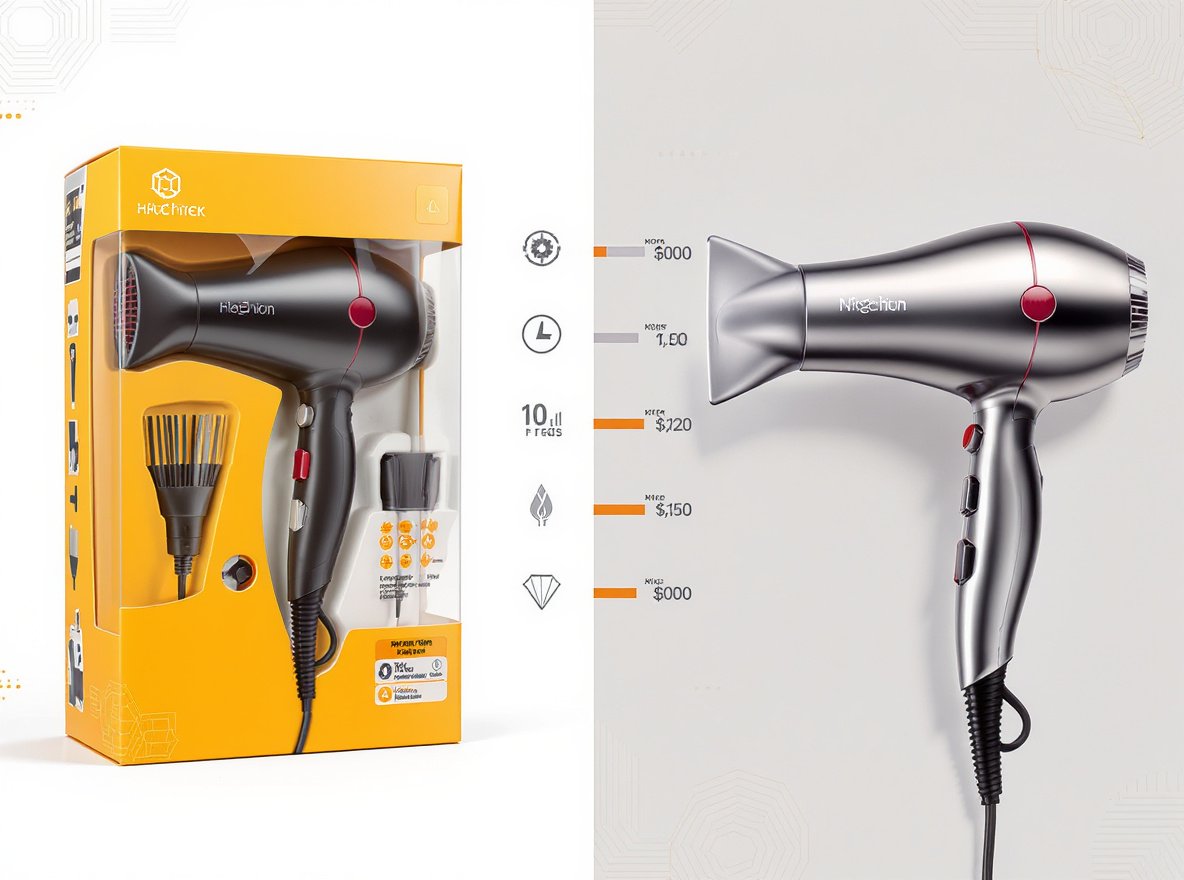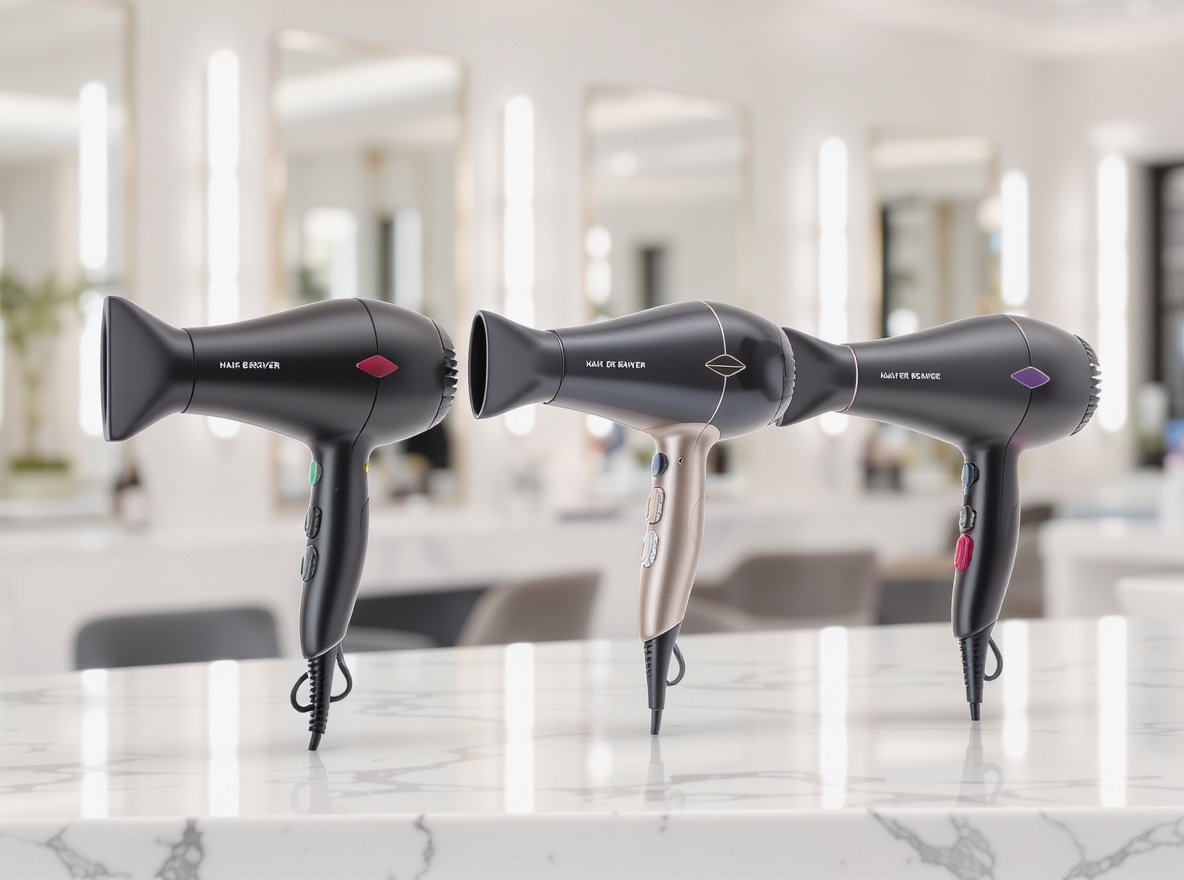You’ve noticed your hair looking thinner after months of daily blow-drying, and now you’re wondering if the damage can be undone. The constant heat exposure has left you worried about permanent hair loss, making you question whether your styling routine has caused irreversible damage.
Thinning hair from blow-drying is generally not permanent if the cause is breakage or dryness rather than true hair loss. When hair is weakened by excessive heat, it becomes brittle and breaks, creating the appearance of thinning. New healthy hair can grow in as damaged sections are replaced.
Don’t panic – there are proven methods to restore your hair’s health and prevent future damage.
Table of Contents
ToggleWhat Causes Hair Thinning from Blow-Drying?
Understanding the root cause helps you address the problem effectively and prevent future damage.
Excessive heat strips hair of natural oils, making it dry, brittle, and prone to breakage, while moisture loss from heat exposure causes internal damage that weakens the hair structure. The combination of high temperatures and physical stress creates the perfect storm for hair damage.

Heat damage occurs through multiple mechanisms:
High temperatures above 300°F strip your hair of its natural protective oils, leaving strands vulnerable to environmental damage. This process makes hair increasingly brittle with each styling session.
Moisture loss happens when heat evaporates water inside the hair shaft. This internal dehydration causes the protein structure to weaken, making hair more susceptible to snapping and splitting.
Physical factors that increase damage include:
• Rubbing hair with regular towels before blow-drying
• Holding the dryer too close to your scalp
• Using maximum heat settings without protection
• Concentrating heat on one section for extended periods
Scalp irritation from prolonged high-heat exposure can dry out and inflame the scalp, potentially weakening hair roots and affecting the overall health of your hair follicles.
Can You Reverse Blow-Drying Hair Damage?
The recovery process depends on the extent of damage and whether the hair follicles remain healthy.
While you cannot fully reverse heat damage at the molecular level, you can significantly improve hair appearance and strength through proper care, and new healthy hair will grow in normally if the scalp and follicles remain undamaged. The key is understanding that surface damage can be managed while waiting for natural regrowth.

Recovery possibilities breakdown:
Surface damage can be improved through targeted treatments that smooth damaged cuticles and restore moisture balance. While the molecular structure cannot be completely repaired, hair can look and feel significantly healthier.
Breakage-related thinning shows the most promise for recovery. Since the hair follicles typically remain intact, new growth can replace damaged sections over time.
Professional treatments using bond-building technology can help rebuild some internal hair structure, though complete restoration to pre-damage condition isn’t possible.
| Damage Type | Recovery Potential | Timeline |
|---|---|---|
| Surface/Cuticle | High – significant improvement | 4-8 weeks |
| Breakage | High – full replacement possible | 2-6 months |
| Molecular/Internal | Moderate – partial restoration | 3-12 months |
The most damaged portions may need to be trimmed off to reveal healthier hair underneath and prevent further splitting up the hair shaft.
How to Restore Heat-Damaged Hair
A comprehensive recovery strategy addresses both immediate damage repair and long-term hair health restoration.
Stop or reduce heat styling immediately, and focus on deep conditioning treatments rich in humectants, oils, and proteins to restore moisture and strength to damaged hair. The foundation of recovery lies in eliminating further damage while actively repairing existing problems.

Essential recovery steps include:
Give your hair a complete break from blow-dryers and hot tools whenever possible. If you must use heat, opt for the lowest effective setting and always apply heat protectant first.
Deep conditioning becomes crucial during recovery. Use hydrating masks containing glycerin, coconut oil, or argan oil 2-3 times per week to restore moisture balance.
Bond-building treatments with peptides, amino acids, or specialized repair technology can help rebuild internal hair structure. These professional-grade products work at the molecular level to strengthen weakened bonds.
Regular trims every 6-8 weeks remove split and damaged ends, preventing further breakage and encouraging healthy growth. This step is essential for severe damage cases.
Gentle handling practices:
• Use microfiber towels or soft T-shirts to blot hair dry
• Detangle gently with wide-tooth combs on damp hair
• Sleep on silk or satin pillowcases to reduce friction
• Opt for low-manipulation protective hairstyles
What’s the Difference Between Hair Thinning and Hair Loss?
Understanding this distinction helps you choose the right recovery approach and set realistic expectations.
Hair thinning involves a gradual decrease in hair density or shaft diameter, while hair loss refers to excessive shedding or loss of hair strands from the follicle. This difference is crucial because it determines whether recovery is possible and what methods will be most effective.

Key distinguishing characteristics:
Hair thinning from blow-drying typically presents as finer, more brittle hair with wider parts and increased scalp visibility. The progression is slow and gradual, developing over months of heat exposure.
Hair loss involves actual shedding with bald patches, receding hairlines, or clumps of hair falling out. This can happen suddenly or gradually depending on the underlying cause.
| Feature | Hair Thinning | Hair Loss |
|---|---|---|
| Primary Cause | Stress, aging, heat damage, styling | Genetics, illness, medication, hormones |
| Appearance | Finer strands, wider parts | Bald patches, receding hairline |
| Progression | Slow and gradual | Can be sudden or gradual |
| Reversibility | Often reversible with proper care | Depends on underlying cause |
| Follicle Health | Usually intact | May be damaged or inactive |
Heat-related thinning typically affects the hair shaft rather than the follicle, making recovery more likely than genetic or medical hair loss conditions.
How to Prevent Future Blow-Drying Damage
Prevention strategies allow you to maintain styled hair while protecting your hair’s long-term health.
Always use heat protectant products before blow-drying, keep the dryer moving constantly, and use the lowest effective heat setting to minimize damage while maintaining styling effectiveness. Proper technique can reduce damage risk by up to 80% compared to improper use.

Temperature and technique management:
Lower heat settings below 300°F significantly reduce damage risk while still providing effective drying. Modern high-quality dryers can achieve excellent results at moderate temperatures.
Keep the dryer moving continuously to prevent heat concentration in one area. Use a nozzle attachment to direct airflow evenly across hair sections.
Pre-drying preparation:
Remove excess water with microfiber towels before blow-drying to reduce overall heat exposure time. This simple step can cut drying time in half.
Apply heat protectant spray or serum to damp hair, ensuring even distribution from mid-length to ends where damage is most likely to occur.
Advanced prevention techniques:
• Maintain 6-8 inches distance between dryer and hair
• Use the cool shot button to set styles and seal cuticles
• Limit blow-drying frequency with dry shampoo between washes
• Finish with leave-in treatments for ongoing protection
The Laifex P1C high-speed hair dryer incorporates intelligent heat control technology that prevents overheating while reducing drying time, making it an excellent choice for damage prevention.
Does Hair Dryer Quality Matter for Hair Health?
The quality and technology of your hair dryer significantly impacts both styling results and potential damage.
High-quality dryers provide even heat distribution, faster drying times, and advanced features that reduce the risk of hot spots and damage compared to basic models. Professional-grade dryers can cut styling time by 50% while delivering superior heat control.

Technology advantages that matter:
Even heat distribution prevents hot spots that can cause localized damage. Professional dryers use ceramic or tourmaline heating elements that provide consistent temperatures across the airflow.
Higher wattage motors (1800W+) dry hair faster, minimizing overall heat exposure time. This reduces the cumulative damage from extended styling sessions.
Advanced features in quality dryers:
• Ionic technology that breaks down water molecules faster
• Multiple heat and speed settings for hair type customization
• Cool shot buttons for setting styles safely
• Lightweight ergonomic designs that reduce styling fatigue
| Feature | Basic Dryer | Professional Dryer | Laifex P1C |
|---|---|---|---|
| Heat Control | Basic thermostat | Multiple settings | Intelligent heat control |
| Drying Speed | 15-20 minutes | 8-12 minutes | 5-8 minutes |
| Heat Distribution | Uneven, hot spots | Even distribution | Precisely controlled |
| Damage Risk | High | Moderate | Low |
Cheap, low-quality dryers often overheat, provide uneven heat distribution, and increase the risk of breakage and dryness. Investing in professional-grade equipment pays dividends in hair health over time.
When Should You Consider Professional Help?
Certain warning signs indicate the need for expert evaluation and treatment beyond at-home care.
Seek professional advice if you notice sudden or rapid hair loss, persistent thinning despite proper care changes, or scalp symptoms like itching, redness, or scaling. A dermatologist or trichologist can diagnose underlying causes and recommend targeted treatments.

Red flags requiring professional attention:
Large clumps of hair falling out or distinct bald patches suggest issues beyond simple heat damage. These symptoms may indicate underlying medical conditions requiring professional treatment.
Persistent thinning that continues for several months despite eliminating heat styling and following proper care routines needs expert evaluation.
Scalp-related symptoms including:
• Persistent itching, redness, or pain
• Unusual scaling or flaking
• Tender or inflamed areas
• Changes in scalp color or texture
Additional considerations for professional consultation:
Hair loss that coincides with illness, medication changes, or hormonal shifts may require medical intervention beyond cosmetic treatments.
Emotional impact from hair changes affecting self-esteem or mental health deserves professional support and treatment options.
How Long Does Hair Recovery Take?
Recovery timelines vary based on damage severity, consistency of care, and individual hair growth patterns.
Mild damage may show improvement after the first deep conditioning treatment, while moderate damage typically requires 2-3 months of consistent care, and severe damage may take 6-12 months for full recovery. The key is maintaining realistic expectations and consistent treatment routines.

Recovery phase breakdown:
Immediate improvements in hair texture and manageability can occur within days of starting intensive moisture treatments. Your hair will feel softer and more manageable almost immediately.
Weeks 2-4: Reduced breakage becomes noticeable as hair strength improves. You’ll see less hair in brushes and on pillows during this period.
Months 2-3: Significant visible improvements in hair thickness and overall health become apparent. This is when most people notice their hair looking substantially better.
Long-term recovery considerations:
New hair growth occurs at approximately half an inch per month, meaning complete replacement of damaged hair can take 6-12 months depending on hair length.
Severe damage may require trimming the most compromised sections for healthy regrowth, which can temporarily reduce length but improves overall appearance.
Factors affecting recovery speed:
• Overall health and nutrition status
• Consistency of care routine
• Severity of initial damage
• Hair type and natural growth rate
• Use of quality hair care products and tools
Summary
Thinning hair from blow-drying is usually reversible through proper care and damage prevention techniques. The key lies in understanding that heat damage typically affects the hair shaft rather than follicles, allowing healthy regrowth over time. Recovery requires eliminating further damage, intensive moisture treatments, and patience with the natural growth process.

For professional results with minimal damage risk, invest in quality dryers with advanced heat control technology like the Laifex P1C. Browse our professional-grade hair dryers at https://laifex.com/p1c-hair-dryer/ and contact us for wholesale pricing on premium equipment that protects your customers’ hair health while delivering salon-quality results.



